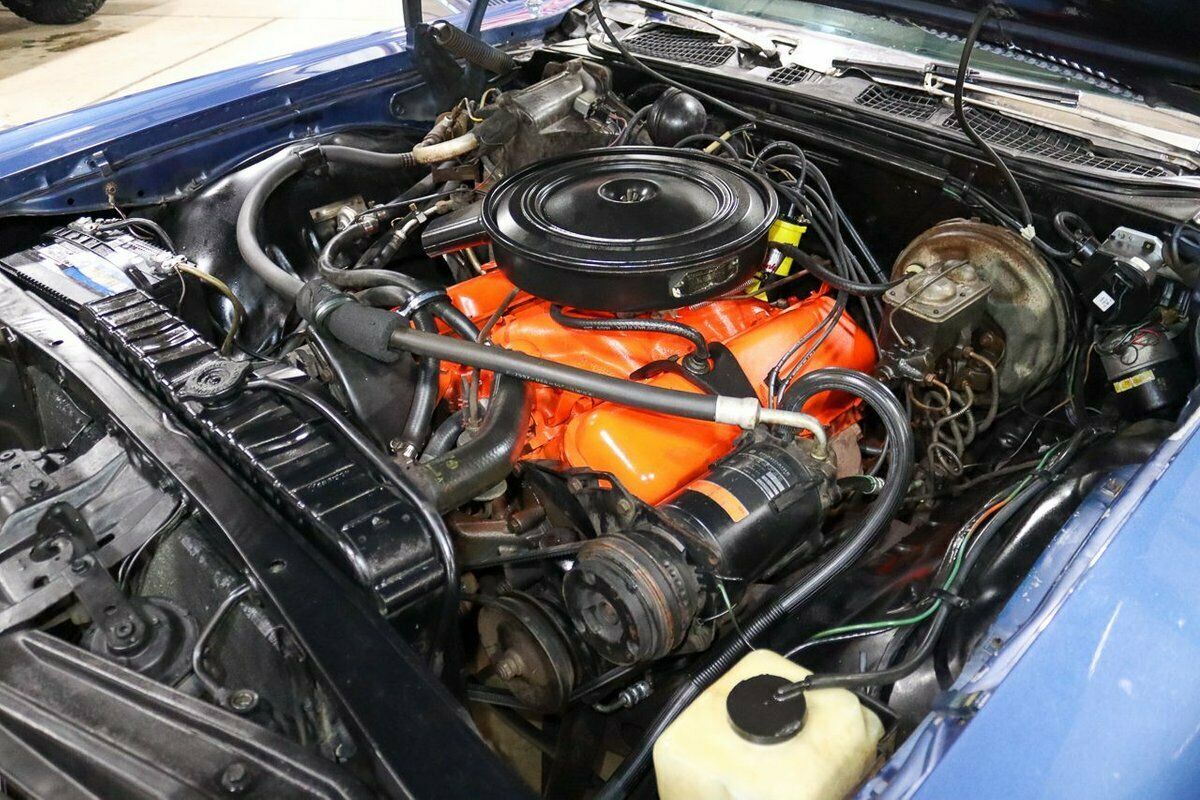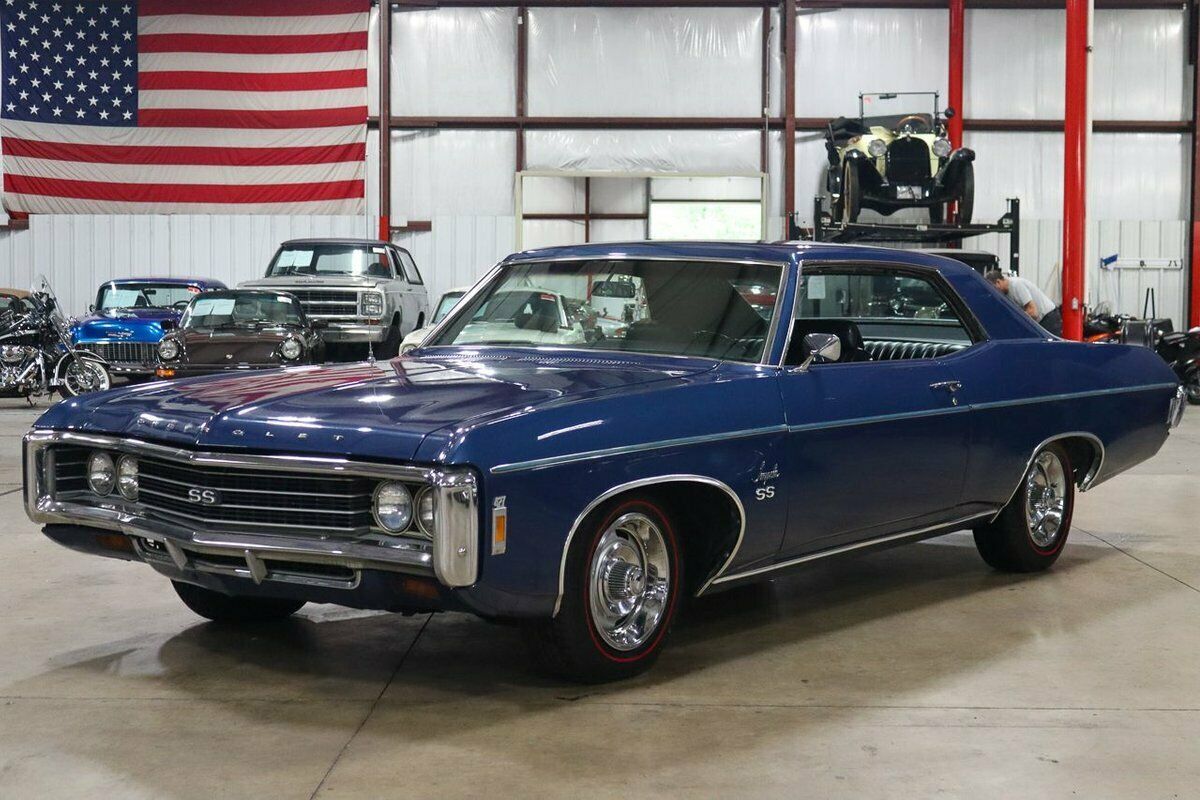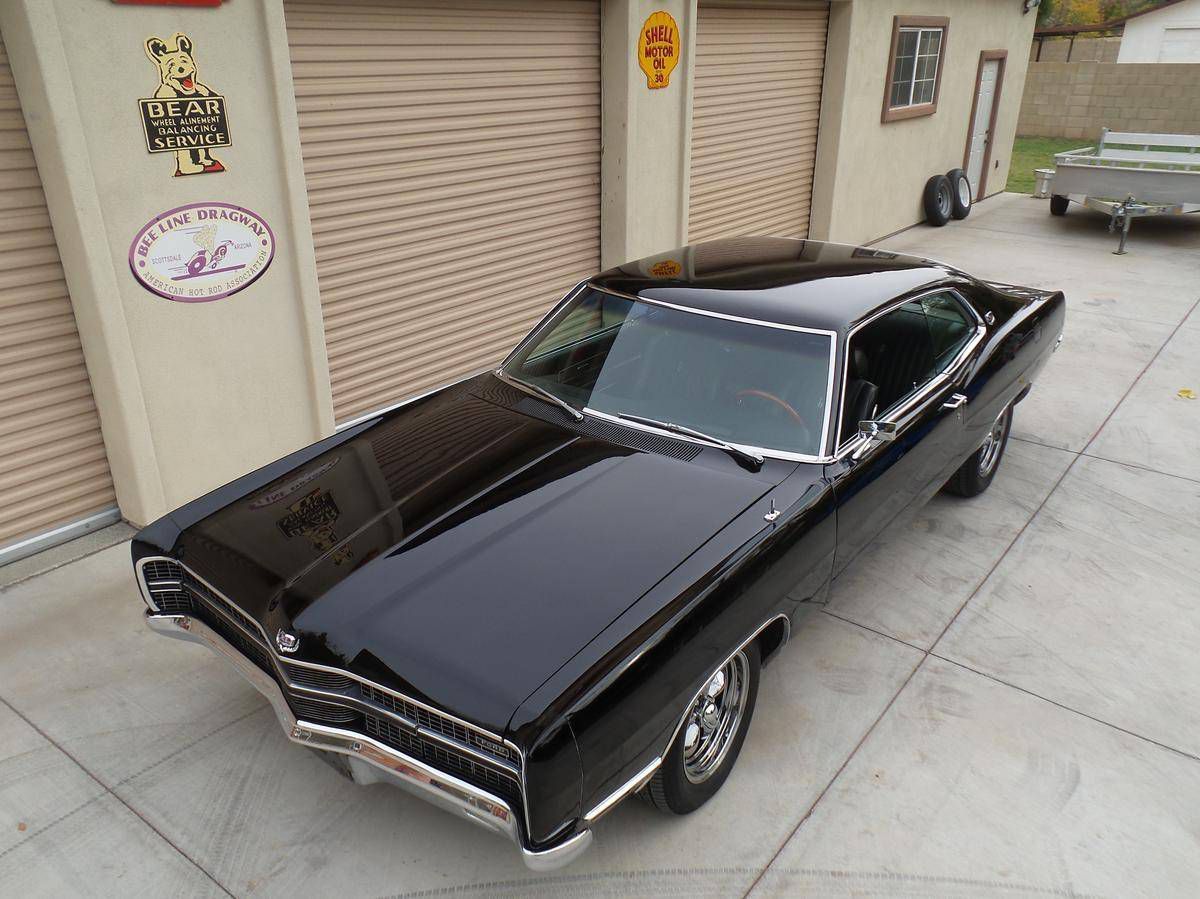During the final years of the 1960s, Chevrolet and Ford both contributed to a beloved era in American automotive history with the production of mighty V8-powered beasts that would later become cherished classic cars. While most relish in the greatness of the muscle cars introduced in the late 1960s, the true value of the heavier class of full-sized American sedans and coupes often remains underappreciated.
Offering massive V8 engines with desirable displacement numbers and admirable performance outputs, the 1969 fourth-generation Chevrolet Impala and the 1969 Ford Galaxie 500 are undeniable icons of power in a golden period in American culture.
The Battle Of The V8s: Which One Made For A Better Engine?
Ford built the 1969 Galaxie 500 on a different platform than its predecessors, with a wheelbase of 121 inches. Unfortunately, however, the 1969 Galaxie did not offer the well-known 427 and 428 engine options, except for the "Police Interceptor," which featured a 360-HP 428 cu-in P-code engine. The Galaxie 500 was now available with the 7.0-liter 429 "ThunderJet," first introduced to the world in the 1968 Ford Thunderbird.
The four-barrel dual-exhaust version of the ThunderJet-powered Galaxie 500 put out 390 HP, while the single-exhaust 2-barrel made 320 HP. However, more common was the 390 cu-in FE V8, which made just under 400 lb-ft. of torque and sent power to the wheels using a 3-speed transmission, either manual or automatic. The 302 4.9-liter Windsor V8 motor was also available in the 1969 model.
On the other hand, the Chevrolet Impala presented a vast array of engine options, including the 327 5.4-liter V8 making 235 HP which was the standard option, the 5.7-liter Turbo Fire V8 which made 255 and 300 HP, as well as a 396 Turbo-Jet making 265 HP, and a 427 7.0-liter Turbo-jet V8 capable of producing 335 and 390 HP which came with the Chevrolet Impala SS 427 Package.
The most powerful option, however, was the L72 V8 that made 425 HP with a compression ratio of 11.1:1. Chevrolet offered this beefy powerhouse only in the "COPO" Impala package, and it paired with a 3-speed manual transmission.
At first glance, the motors put in both the Chevrolet Impala and the Ford Galaxie 500, and the horsepower numbers they put out seem almost identical. And in terms of power and sheer acceleration, both of these monsters performed similarly. Yet, the Ford engines proved to have better durability and reliability. And this characteristic of the Galaxie 500 was not limited to the engine, as the mechanical parts rarely broke, and it was an easy car to own all-around. The 1969 Ford Galaxie also had noticeably better MPG ratings than its rivals.
Nevertheless, the Chevrolet Impala provided more ride quality and several exciting features, such as the option to spray ice melt onto the rear tires for safety in winter.
There Were Multiple Body Styles For The 1969 Galaxie And Impala
Chevrolet redesigned the Impala for the 1969 model year as it featured brisk lines on its body and vent-less front windows. The 1969 Impala inherited the same framework, inner body shell, and the 119-inch wheelbase from the 1965 Impala, making it only two inches shorter in width than the 1969 Ford Galaxie 500.
The 1969 Impala was available in so many trims and body styles that would be confusing at times. Chevrolet offered two-door options such as the Custom Coupe, the Sport Coupe, and the convertible. The four-door trims consisted of the sport sedan, which was a hardtop, and the conventional four-door sedan. The 1969 Galaxie introduced similar trims except for the Custom Coupe. The Galaxie 500 also offered Ford's "Sportsroof," which provided rear sail panels that would resemble a fastback roofline.
The Interior Design Of Both Full-Size Cars Was Fresh
In its spacious interior, the Ford Galaxie 500 featured a "singe-cove" design, which differentiated the driver's seat and the space around it from the rest of the cabin, with the dashboard being a pod surrounding the driver rather than conventional side-to-side dashboard designs. The Chevrolet, however, proved to be superior when it came to attention to details.
The Impala's steering column housed the ignition switch doubling as a lock for the steering wheel as well. Meanwhile, Ford did not introduce this feature until the 1970 model Galaxie 500. Both cars offered front seat headrests for the first time in their 1969 models due to a federal safety rule.
At the end of the day, the Chevrolet sold record-breaking numbers of Impalas, not only in 1969 but for decades. This made the Ford Galaxie the inferior car in terms of sales. Yet, this did not make the Ford the lesser vehicle, just the lesser-appreciated one.

-1.jpg)


